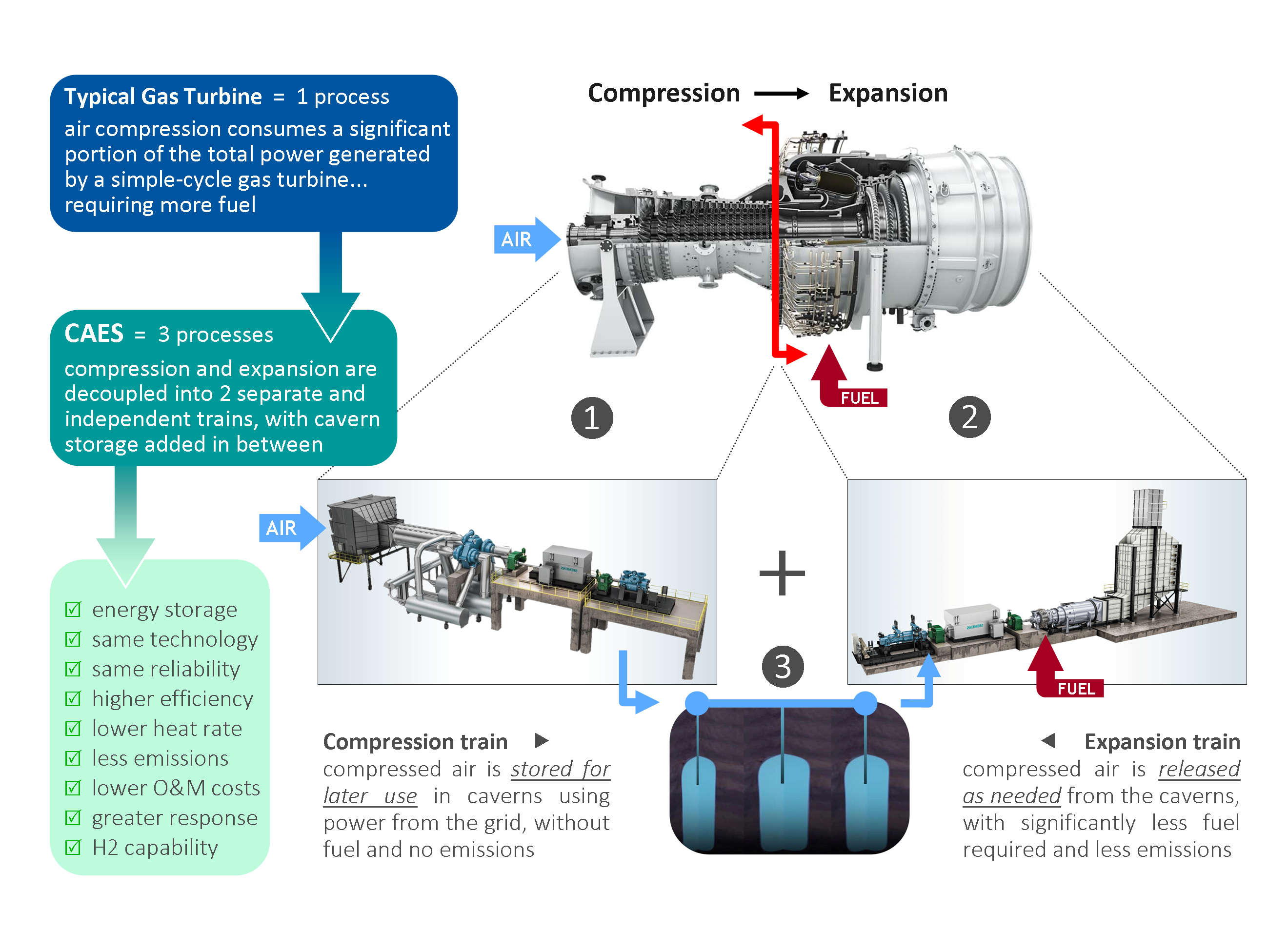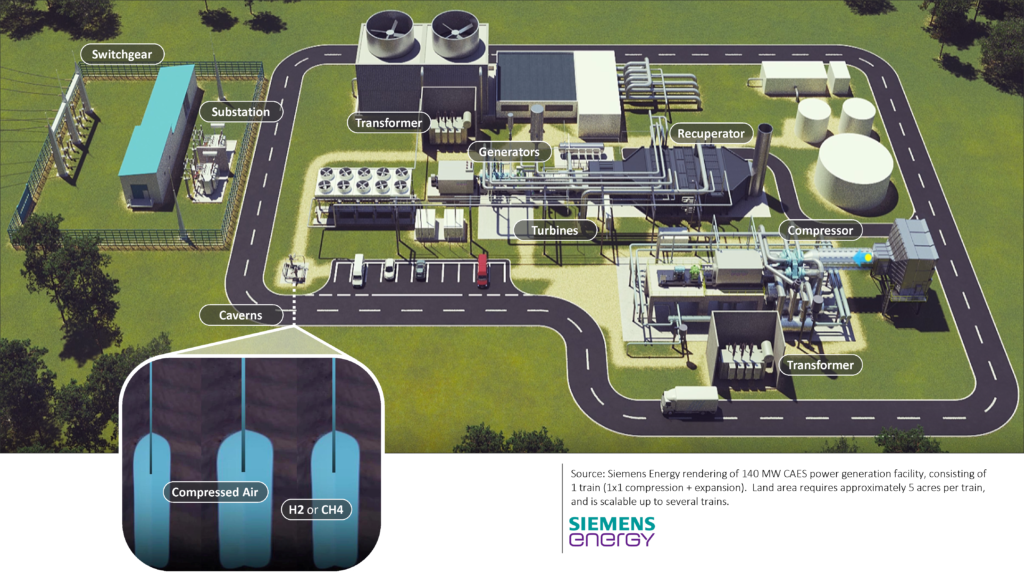COMPRESSED AIR ENERGY STORAGE (CAES) TECHNOLOGY
Compressed Air Energy Storage (CAES) is a technology that has been in use since the 1970's. CAES compresses air using off-peak, lower cost and/or green electricity and stores the air in underground salt caverns until needed. When the pressurized air is released, it is heated and run through a gas turbine, combined with the fuel source, to generate electricity. The process uses identical technology and equipment as a typical gas-fired power generation facility using combustion turbines, except that the compression and expansion processes are decoupled, with a storage system incorporated between the two. This simplified process is known as diabatic (or conventional) CAES, in which the air is reheated when released.
Other types of CAES technology (such as adiabatic CAES, which seeks to gain efficiencies by storing the heat lost during compression to reheat the air when released), are not as cost-effective as conventional CAES due to the significant capital required for thermal storage or heat exchange facilities.
CAES - Proven and Reliable Technology
As a proven energy storage technology, CAES offers a high degree of reliability with minimal technology risk. CAES utilizes mature technologies and reliable equipment with a long history of manufacturing and operating performance… the primary components such as compressors and gas turbines have been extensively deployed in a wide range of industries, including power generation, for decades. This extensive operational experience and well-developed manufacturing processes for these components contribute to the minimal technology risk associated with CAES.
Basic CAES Components

Using equipment and technology with such widespread use and operational history for CAES translates into numerous advantages:
- it enhances the financeability of CAES projects, making them more attractive to investors and lenders,
- well-established supply chains for turbines and compressors enable efficient procurement and lower costs, and
- ensures the availability of skilled personnel with experience in the operation and maintenance of this equipment resulting in smooth and reliable operations of CAES facilities.

Theoretically, a CAES facility may be sited anywhere. However, due to the high volumes of compressed air that must be managed and stored, the most feasible and cost-effective option for such volumes are salt caverns (surface tanks are too capital intensive on a utility-scale basis, and depleted underground reservoirs or hardrock mines are prone to leakage due to geologic fractures). Salt caverns have been routinely used as storage since the 1950’s for a wide range of products including crude oil, natural gas, NGLs, helium and hydrogen, and indeed there are hundreds of these caverns in use today throughout the world. These caverns may be solution-mined to meet size specifications depending on volumes or energy storage duration desired.
The economics of a CAES facility may be further enhanced based on the market in which the power to be generated is to be sold or an energy storage service will be provided. In regions where new power generating capacity is needed due to load growth or to replace the capacity from decommissioning of older coal facilities, CAES is an ideal energy transition opportunity due to the greater fuel efficiency and significantly lower emissions compared to other fossil-fuel alternatives. Additionally, in markets with growing or planned generation from wind and solar projects, a CAES facility will allow a smoother integration of these renewable resources with the capability of storing the excess power generated in periods of low demand then releasing the compressed air and generating power when demand is higher. If the market has significant existing renewables penetration resulting in grid congestion, CAES can allow the deferral of expensive new construction or upgrades to the transmission system.


